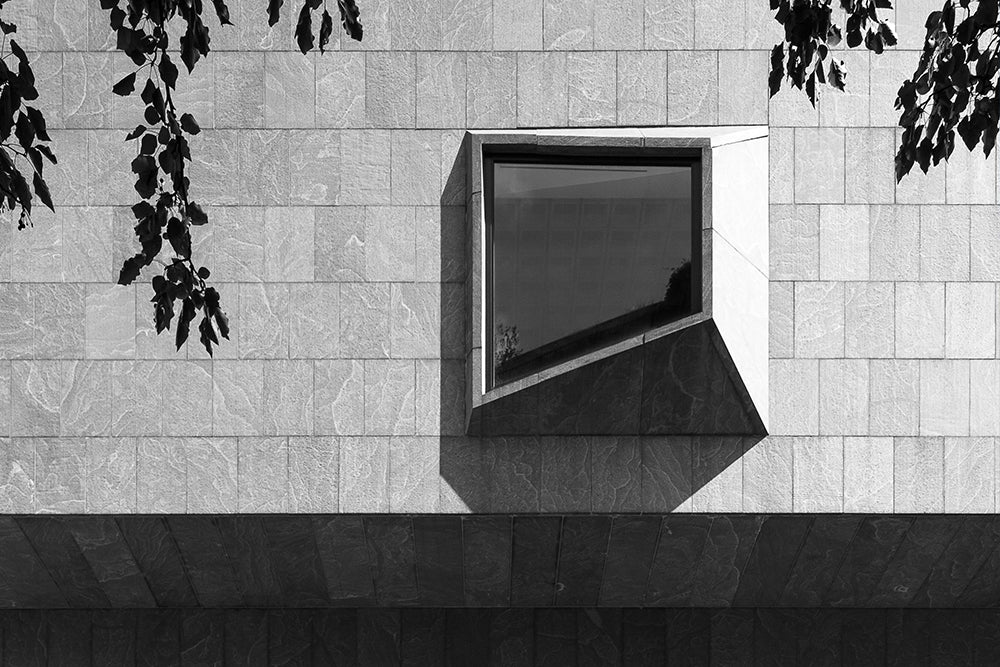
Exploring Brutalist architecture in New York City with Allison Meier
Share
Looking to explore concrete architecture in New York City? Let Allison Meier, expert NYC tour-guide and Brooklyn-based writer, author of our Concrete New York Map be your guide. Here, she tells us what's unique about NYC’s strain of Brutalism, directs us to some bonus buildings that didn’t make the cut for the map and then towards a couple of buildings off the beaten track worth visiting.

Begrisch Hall, Marcel Breuer, 1961. All photography: Jason Woods
Which buildings on the Concrete New York Map would you say are the best examples of New York ‘Brutalism’ and why?
There’s a whole range of concrete architecture on the map, with some structures dating back to the 19th century like the Cleft Ridge Span in Prospect Park that is an early example of Béton Coignet material, but for great Brutalist angles, I recommend visiting Marcel Breuer’s 1960s buildings at Bronx Community College. They’re a little out of the way so they are often off the radar for even longtime New Yorkers.
Begrisch Hall has an especially interesting trapezoidal shape balanced on triangular supports, while Meister Hall has a grid façade reminiscent of Breuer’s ceiling for his Whitney Museum of American Art (now Frick Madison, pictured above) in Manhattan. Each does something unexpectedly expressive with concrete.

Cleft Ridge Span, Francois Coigne, 1872, Prospect Park
What do you think is unique about the Brutalist architecture of New York in comparison to other cities?
New York doesn’t have colossal concrete behemoths on the scale of London's Barbican Centre or Boston's City Hall. But it has some of the 20th century’s leading architects fitting their visions into the density of New York and holding their own against a skyline that is dominated by icons of Art Deco like the Empire State Building and sleek new glass towers.
I love how Breuer’s Whitney Museum elegantly rests on Madison Avenue for a pretty hefty building, with its concrete form rising like an inverted staircase, inviting visitors in on a bridge as if they're crossing a moat. The Tribeca Synagogue from 1967, designed by William N. Breger, similarly uses concrete to make a statement on a busy street as its concrete shell swoops down over Tribeca.
And some of the most interesting concrete from the mid-century is on very utilitarian buildings, such as the George Washington Bridge Bus Station from 1963 by Pier Luigi Nervi and Richard Dattner's 1967 playground at West 67th Street in Central Park where kids can climb small ziggurats and explore curving concrete walls. New York’s Brutalist architecture is often found at these human scales, adding to the vibrancy of the city while rarely dominating it.

George Washington Bridge Bus Station, Pier Luigi Nervi, 1963
What’s the latest news on Brutalist architecture in New York? Have there been any demolitions, renovations or new discoveries of note?
I recently visited the Spring Street Salt Shed that’s on the map on a tour presented by Dattner Architects for the 2021 Open House New York. The Salt Shed was completed in 2015 and it was interesting to hear them share how they designed such a radically shaped building with its shard-like angles as an active site for the Department of Sanitation, and how it’s still changing as the concrete will weather over time from the blueish colour it started as to a more muted grey. It was a reminder that these concrete buildings are always changing and that’s part of the beauty of the material as well as its need for conservation attention.
Since the Concrete New York Map was published in 2017, the TWA Flight Center that Eero Saarinen designed at JFK Airport was opened as a hotel. It's stunning and exciting to see its huge concrete wings open to the public again after years of closure. Philip Johnson and Lev Zetlin's New York State Pavilion from the 1964 World's Fair has also received some restoration attention following years of neglect.
However, recent demolitions of New York architecture have been a reminder that even beloved buildings can be lost without protection. For example, not far from me in Brooklyn is Grand Prospect Hall from 1903 – which was a complete opposite from Brutalism with its elaborate Victorian-style interior – which had its gorgeous interiors wrecked in 2021 after it was sold to developers. Some buildings on the map are landmarked, many are not. I won't argue that every single one of them must be preserved forever, but it is important to recognise the architectural heritage of the city as something worth saving.
As for new buildings, if I were to create this map now, I would include the tulip-shaped concrete pilings for Heatherwick Studio's Little Island that opened in 2021 on the Hudson River, as well as Santiago Calatrava's long-awaited St Nicholas Greek Orthodox Church at the World Trade Center site which has an intriguing mix of concrete and marble that is be illuminated at night.

Spring Street Salt Shed, Dattner Architects, 2015
If we had one afternoon to visit one Brutalist building on the map, which would it be and why is it so special?
While I don't think many would call it Brutalist, for a spectacular New York concrete building you really can't beat a visit to Frank Lloyd Wright's Solomon R. Guggenheim Museum from 1959. Walking up its interior spiral its engaging from every vantage point, so much so that it's often hard for the exhibited art to compete with the architecture.
Bartlesville, Oklahoma, where I grew up has Wright's Price Tower – the only skyscraper he got to realise in his lifetime – from 1956, which he obsessively designed to have no 90-degree angles. There, he created a building with all these severe points and incredibly claustrophobic elevators with hexagonal cabs, but the Guggenheim is all flowing curves. I’ve spent a lot of time with both buildings and never get tired of discovering all the details and considering how they came from the mind of the same architect who would not let even a ventilation grille go unnoticed.
From there, you could take a long walk through Manhattan and see the Edward Durell Stone Townhouse or Lincoln Center, where concrete is used in sculptural ways, or just look down at the sidewalk. Concrete is so much a part of New York City; it is a passageway, a surface for street art, a measure of time as it ages, and it takes on the imprints of leaves or feet who passed by when it was still wet. It freezes those moments in which it was created and leaves them there to be discovered.

The interior of the Solomon R. Guggenheim Museum, Frank Lloyd Wright, 1959
Are there any Brutalist buildings that didn’t make the cut on the Concrete New York Map that you would like to shout out? Why are they worthy of a mention?
Oh, yes! I’ve worked on three maps for Blue Crow Media and there is always something that gets left out, whether for space or an attempt to give adequate attention to all five boroughs. Something I wish I'd researched more is the city’s concrete sculptures, like Costantino Nivola's playful 1960s horses that were unceremoniously removed in 2021 from a housing complex on the Upper West Side and artist Rachel Whiteread's concrete cast of a cabin that was installed in 2016 on Governors Island. While architecture is endlessly fascinating to explore, it’s only part of the story of concrete in New York.


1 comment
i’m filming at Bronx College today and saw Breuer’s building. It’s beautiful. Definitely worth the commute.